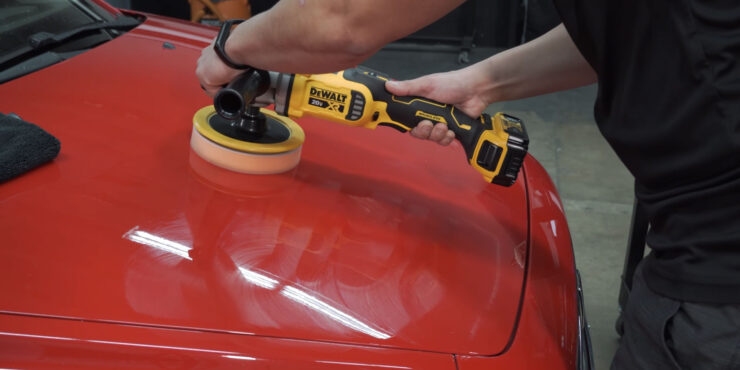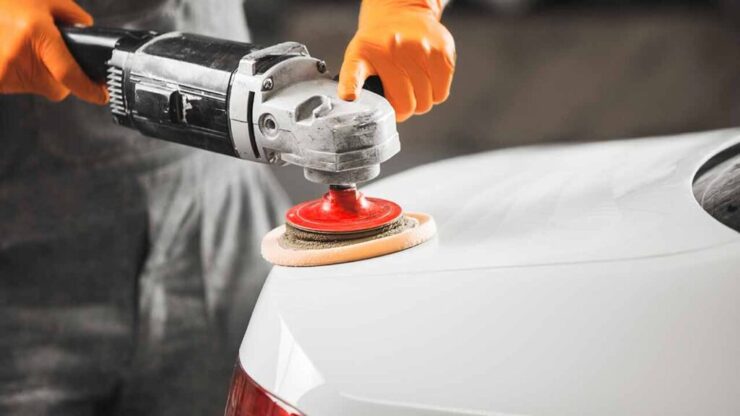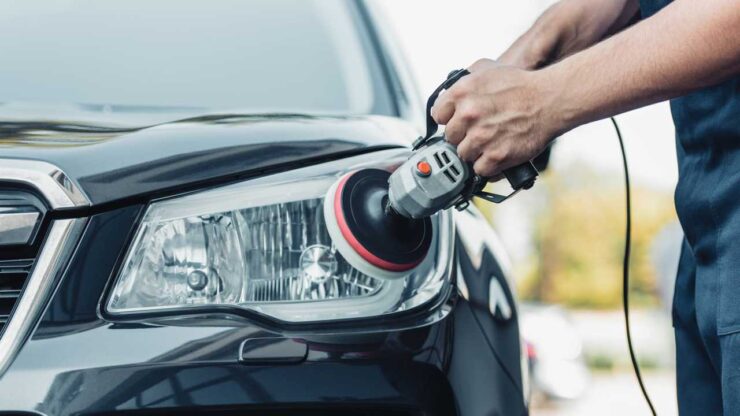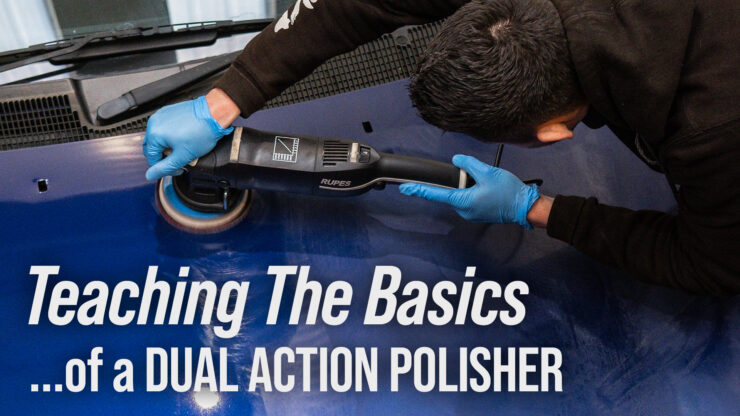Table of Contents
For many car enthusiasts, a flawlessly polished vehicle isn’t just about aesthetics—it’s a testament to their passion and commitment. This impeccable shine is not achieved by chance. The right tool is pivotal in navigating the intricacies of automotive detailing.
Whether you’re a professional or a hobbyist, understanding the nuanced differences between rotary and dual-action polishers can transform your approach. As we delve deeper into this topic, let’s unpack the wealth of knowledge behind each tool’s spin and shine.
Understanding Rotary Polishers

The world of automotive detailing introduces us to the robust capabilities of rotary polishers. Often dubbed as circular polishers, these tools are defined by their spinning motion. This direct drive mechanism ensures that the pad moves consistently on a single axis. This straightforward movement offers the user unparalleled control and precision. Revered for their potency, rotary polishers can yield instantaneous results. This speed and efficiency are precisely why many seasoned professionals gravitate towards them.
Yet, every tool has its learning curve and challenges. The immense power of rotary polishers, when not wielded correctly, can inadvertently lead to paint burns or unsightly holograms (those dreaded swirl marks). So, despite their potential for quick and dramatic results, they’re not foolproof and demand finesse and expertise for the best outcomes.
Understanding Dual-Action Polishers
Enter the realm of Dual-Action (DA) polishers, and you’ll notice a distinct contrast. These polishers have a unique dance—they spin and simultaneously oscillate in an elliptical pattern. This intricate movement is more than just technical jargon; it’s a safeguard. By ensuring the pad never lingers too long in one spot, DAs inherently minimize excessive heat or friction, thereby mitigating paint damage risks.
While DA polishers present a gentler approach, they’re by no means less effective. Their design makes them a go-to for novices and anyone prioritizing safety. That said, this gentle touch may sometimes mean investing more time to match the correction level achievable with rotary tools.
Polishing Goals and Objectives
Embarking on any polishing project without clarity is like setting sail without a compass. It’s essential to identify your endgame. Are you chasing a mirror-like shine or targeting deep-set imperfections? Perhaps it’s a bit of both? By understanding your objectives, you align your efforts with the most suitable tool. While some tasks cry out for the brute force and precision of a rotary polisher, others thrive under the nuanced and tender caress of a DA.
Paint Correction vs. Paint Enhancement
At the heart of detailing lies a pivotal distinction—paint correction versus paint enhancement. The former delves into the nitty-gritty, targeting and rectifying imperfections like scratches, oxidation, and etching. On the flip side, paint enhancement focuses on elevating your vehicle’s aesthetic appeal, accentuating its shine and gloss. The formidable power of rotary polishers makes them stalwarts of correction. In contrast, DAs, with their tempered approach, champion enhancement, ensuring the vehicle gleams without introducing new blemishes.
Safety Considerations
Every tool, irrespective of its prowess, introduces a certain level of risk. The sheer strength of rotary polishers, especially in the grasp of a novice, can lead to unfortunate mishaps like paint burns or swirl marks. These potential pitfalls stem from the tool’s unidirectional power. Conversely, the oscillating dance of DAs considerably diminishes these threats, making them a more forgiving option, especially for those still honing their skills or preferring a safety net.
Versatility
When it comes to versatility, DA polishers wear the crown. Their adaptability sees them effortlessly transition from tasks like wax application to tackling minor paint imperfections. While rotary polishers are undisputed champions in intensive corrections, their aggressive nature can sometimes be overkill for lighter, more nuanced tasks, potentially causing more harm than good.
User Skill Level

The detailing journey varies for everyone. For rookies, the learning curve can be daunting. Here, DA polishers, with their dual-action safeguard, emerge as the more forgiving companion, significantly reducing risks associated with paint damage. However, rotary polishers, with their promise of swifter results, beckon those seasoned in their craft. Their efficiency comes at the cost of requiring more skill to harness their power without inadvertently causing damage.
Speed and Efficiency
In the fast-paced world of detailing, time efficiency is golden. Rotary polishers, with their robust motors, quickly address and rectify defects. But this rapidity isn’t without its perils. The swift action, if not monitored, can lead to avoidable errors. On the other side of the spectrum, DAs, while methodical and slightly more time-consuming, promise consistent outcomes, often presenting a safer bet for those less versed in the art of polishing.
Heat Generation and Paint Thickness
Every swipe, every spin generates heat. Rotary polishers, with their relentless and direct motion, are akin to a focused beam of sunlight—they produce intense heat. This warmth, if unchecked, can compromise paint finishes and even thin out already fragile layers. DAs, however, dance to a different tune. Their oscillating rhythm ensures a more even heat distribution, drastically lowering the odds of concentrated heat buildup and its associated woes.
Cost and Investment

The realm of polishers presents a spectrum of price tags. Generally, rotary polishers, while more wallet-friendly initially, can exact a higher toll in the long run if their power leads to paint mishaps. On the contrary, while DAs might demand a heftier upfront investment, their innate safety mechanisms might prove economical over time, especially when factoring in potential repair costs.
Conclusion and Recommendations
The debate between rotary and dual-action polishers isn’t about declaring a universal winner. It’s about aligning tools with individual needs, skills, and goals. For those at the beginning of their detailing journey or valuing a balance between safety and efficiency, DA polishers emerge as worthy allies. However, for the seasoned artisans craving swift, transformative results, the might of rotary polishers remains unparalleled. Irrespective of your pick, remember that the true magic lies in mastering your chosen tool. Dedicate time to practice and refine your skills, and the resultant luster on your vehicle will mirror your expertise.

